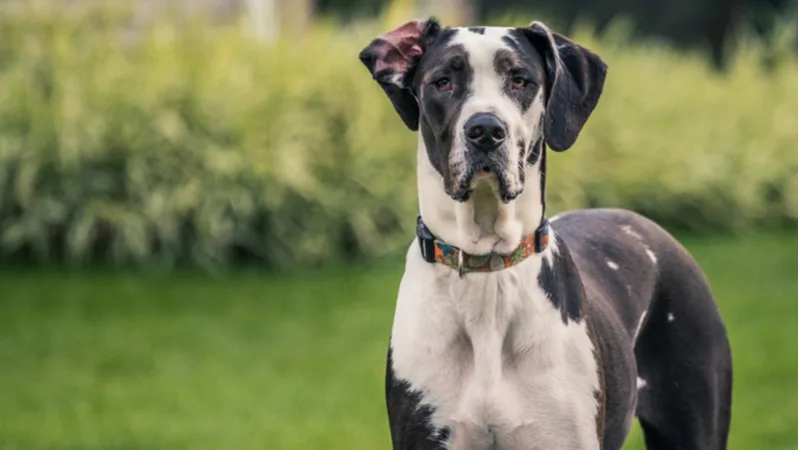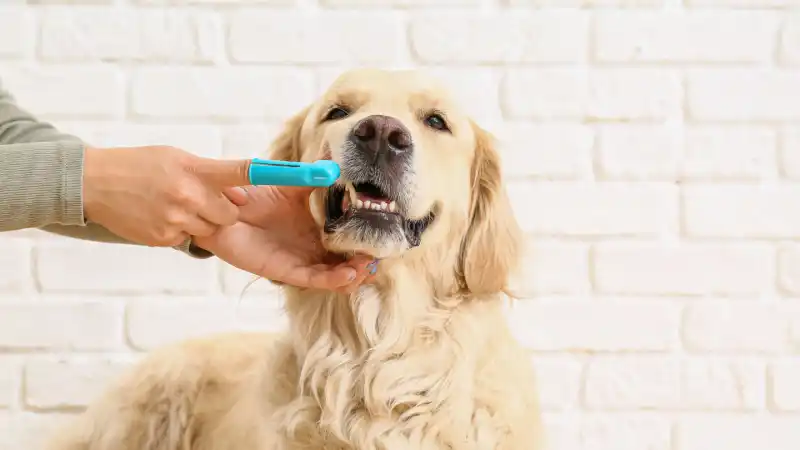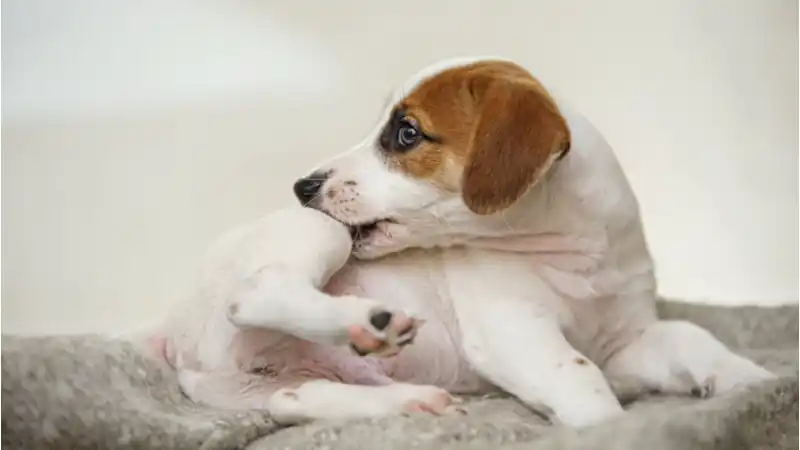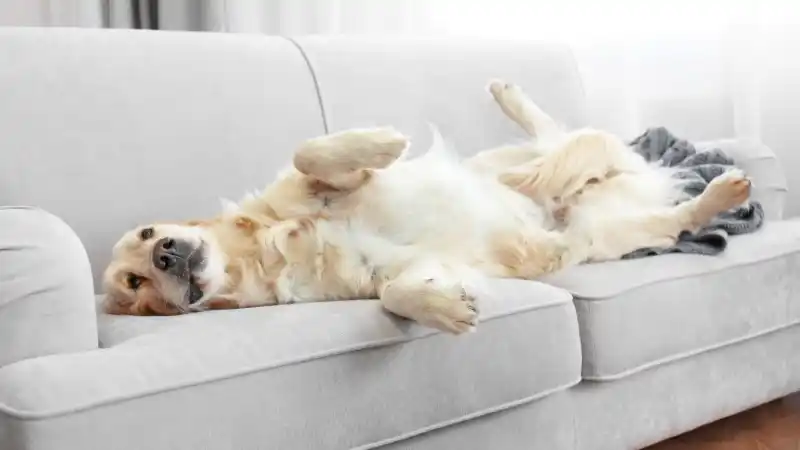How to Reduce the Risk of Bloat in Large Breed Dogs
Dog bloat (GDV) is an urgent medical emergency for large breed dogs. Read about preventive measures, symptoms, and treatment options, including surgery, for bloat.

One of the most urgent medical emergencies we experience in the veterinary field is bloat. It is a condition that can affect any breed, but is more commonly seen in deep-chested, middle-aged large-breed dogs. Bloat or GDV (Gastric dilation and volvulus) occurs when the stomach fills with air, food, water, or any combination of the three (which causes the dilation) and then flips (the volvulus). The dilation itself is an emergency, but the rotation causes all sorts of blood flow, organ, and heart problems, ultimately leading to a painful death if untreated.
All pet owners should be aware of preventive measures and signs of bloat, especially those who own large-breed dogs.
Preventive Measures for Bloat
First, let’s review three important preventive measures:
Gastropexy
A surgical procedure that is typically done during spay and neuter procedures. This is an easy decision to make for female large-breed dogs as the surgeon is already in the abdomen to perform the spay. For the males, it does require an extra step to open the abdomen, but the advantages outweigh avoidance of the procedure.
Gastropexy involves attaching part of the stomach to the abdominal wall, which will help prevent twisting during bloat. A main advantage to doing the procedure at the spay or neuter is our furry friends only undergo one anesthetic procedure, reducing accidents while under anesthesia. A second advantage is that younger dogs recover quicker than middle-aged or senior patients. The third is the extra cost for a gastropexy is significantly less than emergency bloat treatment. Talk to your primary veterinarian about whether they are comfortable performing the procedure or if they recommend referring you to a surgical specialist.
For male dogs, or if your canine friend has already been spayed or neutered, you may want to inquire about a laparoscopic procedure option. This is usually done by a surgical specialist using a special tool with a camera (or scope), and it avoids having to open up the abdomen. This helps shorten the recovery period as the incisions are much smaller and less painful. There is no guarantee with either procedure that bloat won’t happen. But gastropexy will greatly reduce the risk and set the dog up for a better outcome if bloat does occur.
Exercise Restriction
Exercise or play time is very important for all dogs and is an essential part of their general well-being. All dogs should rest for a period after eating or drinking, especially large-breed dogs. Ingested food and water in the tummy, coupled with increased respiration during exercise, can contribute to the bloating and flip of the stomach. To help avoid this situation, it is best to wait 1-2 hours after eating or drinking before exercise.
Food and Water Restriction
Another strategy is to feed smaller meals throughout the day and to not let our furry friends drink to excess. If they are very thirsty, you can always pull the water bowl and wait a few minutes before giving them more water. Raised food and water bowls are not recommended, unless directed by your veterinarian. Eating slowly will also help, especially for those dogs that love to wolf down their food. To accomplish this, you can break their meals into ¼ servings and feed over 15 minutes or use slow feeder bowls.
Educating all members of the family about proper preventive measures for bloat is important to the success of the plan. It is also important for all members to know the signs of bloat. Despite our best efforts, bloat can sometimes still occur, and it is imperative to recognize and seek veterinary care immediately. Chances for survival are much greater if the patient receives veterinary care in the early stages, about 1-2 hours after bloat occurs. Do not hesitate to call your veterinarian if you are not sure, since delays can be lethal.
Here are some of the more common signs of bloat:
Retching: Looks like vomiting, but nothing is produced.
Salivating: Excessive drooling from the mouth.
Round abdomen: As the stomach enlarges so does the abdomen, resulting in a painful, enlarged abdomen. Do not apply pressure if this is seen, you can’t force the air out!
Stretching: Many dogs will extend their front legs and lower their head, while raising their hind end. They may stay in this position for long periods of time or keep repeating it. (Not to be confused with a normal stretch when they get up from sleeping).
Lethargy: Dog is very weak, but lacks the will to get up. Often, they will not react when called while lying down.
White or pale gums: Lift up the lip and check the gums. If the stomach has flipped, blood flow will be restricted. This results in pale to white gums. It is even a good idea to look at their gums when they are healthy, so you can easily recognize the difference.
If these preventive measures did not work and signs of bloat are noted, immediately call your veterinarian and let them know you are on the way to their practice. This will allow them time to set up properly for the emergency or direct you to an emergency practice if they are unable to assist. If you have a large-breed dog, it is a good idea to have a discussion with your veterinarian about a plan in case of bloat. The surgery can be very difficult and is not performed by all veterinarians. Most dogs are hospitalized for 24-48 hours or longer and not all veterinary practices provide overnight care. Knowing where to go if bloat occurs will save time, reduce extra stress for you and your companion, and may avoid transportation to an overnight care facility. The less movement and transportation pre- and post-surgery, the less likely postoperative complications will occur.
Once your dog has been evaluated and stabilized by the emergency room team, additional diagnostics, treatment, and surgery may be recommended. Emergency treatment and diagnostics vary by patient and will typically include placement of an IV catheter, IV fluid administration, pain medication, sedation or anesthesia, diagnostic blood work, imaging (usually x-rays), and the use of monitoring equipment. The imaging will help determine if surgery is warranted by revealing whether the stomach has flipped. If it has not flipped, a tube can be run down the esophagus, under anesthesia, to try and reduce the air and fluid in the stomach. If the stomach has flipped, an emergency surgery will be required. There are numerous concerns once the stomach has flipped, including blood flow disruption, heart issues, organ damage (to the spleen and pancreas), and death of the stomach tissue. Surgery is not a guarantee for survival, as complications to the organs and heart can occur post-op even if the surgery is successful. This is why most patients are hospitalized and monitored for 2-3 days or more after the surgery.
Bloat is a very serious medical emergency and having a preventive plan that all family and friends follow is imperative. A well-laid plan will most likely keep your companion out of the emergency room. But, if your dog happens to experience bloat despite preventive measures, knowing the signs, taking immediate action, and having a clear path to proper veterinary care will increase the chance of survival.
Lastly, consider a pet insurance plan that covers bloat. The care required to treat a medical emergency such as bloat, can be a shock to the pocketbook for most families. Pet insurance can help remove the financial concern during an emergency and put the focus on the care of your furry family member.
Treatment for bloat is part of AKC Pet Insurance’s Accident & Illness Coverage (underwritten by Independence American Insurance Company).

Every Dog and Cat Deserves the Pet Insurance of Champions
Get prize-winning care for your pets.
Dr. Preston Turano graduated from the University of Illinois College of Veterinary Medicine in 2002. Since that time, he has been a Veterinarian, Medical Director, and Practice Owner.
READ MORE ARTICLES

